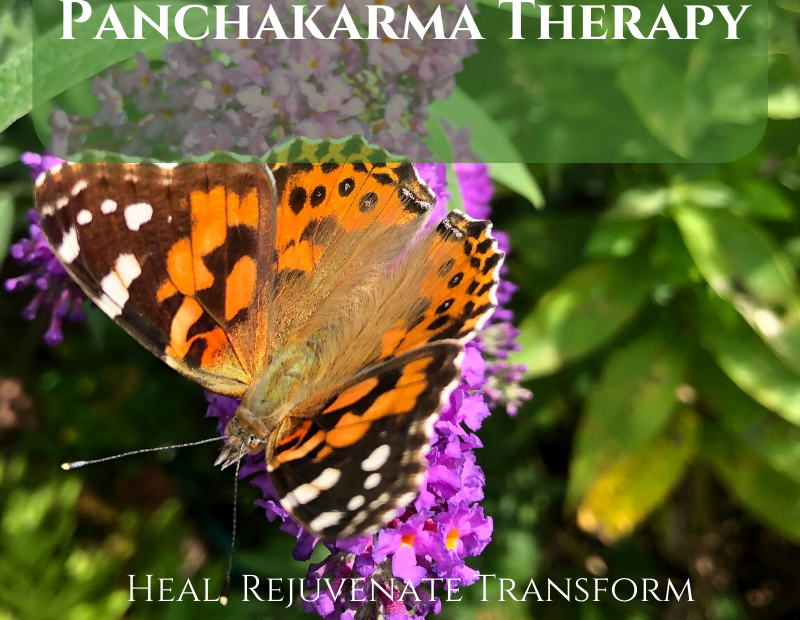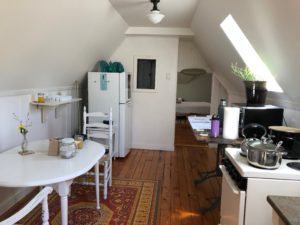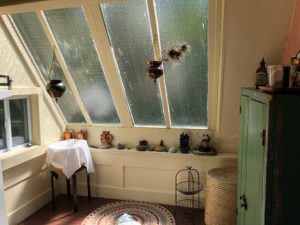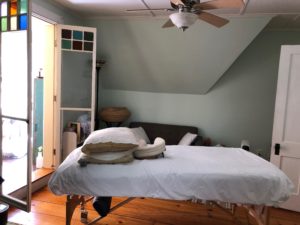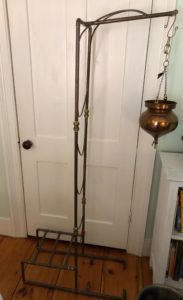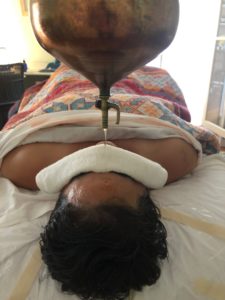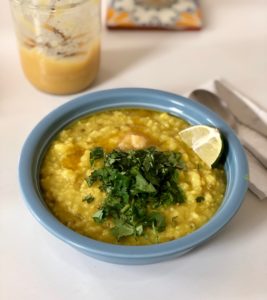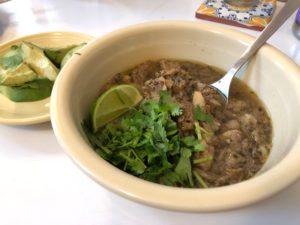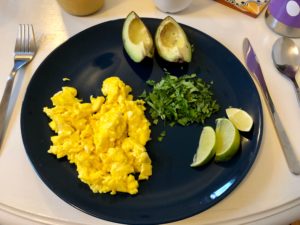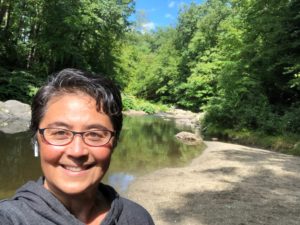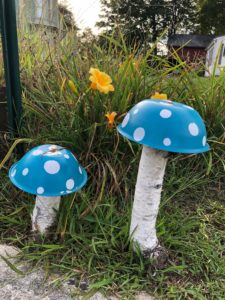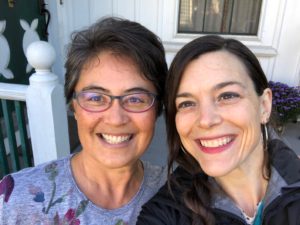For the last 13 years, I’ve been getting the message from ME – my body, to pay attention and to take care of myself. I started listening, slowly at first but then as the message became louder and stronger, I heard it.
Hip pain, back pain, joint pain, heart pain, worry, anxiety, overwhelm, critical, gastritis.…
I’m getting older so I thought it’s a normal aging process to experience more pain and dis-ease. This notion of aging really changed when I discovered Ayurveda. Learning about my unique body type or dosha, how I can create ease, a sense of well-being, and lessen pain in my body has been life changing.
The definition of health in Ayurveda is:
“sama dosha sama agnischa sama dhatu mala kriyaaha|
Prasanna atma indriya manaha swastha iti abhidheeyate” – Sushruta Samhita
“One whose doshas (vata, pitta and kapha) are balanced, whose digestive fire (digestion, assimilation and metabolism) is balanced,
whose bodily tissues and elimination processes are functioning normally,
and whose senses, mind, and self are filled with bliss;
such a person is called a healthy person.” (http://2.imimg.com/data2/OX/CF/MY-/about-ayurveda.pdf)
Three years ago, I sustained a back and right ankle injury that stopped my world. At first I was flat on my back, then gradually I was able to walk a block and then up to 70% of my previous activity level. I have been healing, but slowly. I realized in order to further support my recovery I needed to take the next step and try panchakarma.
What is Panchakarma Therapy?
Panchakarma is a cleansing and rejuvenation therapy to create health and vitality. The word panchakarma originates from Sanskrit, means five (pancha) action (karma), referring to the five rejuvenation and purification therapies in Ayurveda. Panchakarma is only one part of a purification program called langhana chikitsa that includes a stronger purification therapy called shodana and a milder purification therapy called shaman (which does not include panchakarma).
Panchakarma improves the body’s ability to eliminate amaor toxins from the body and the mind by strengthening agni. One’s agni includes digestive fire, enzymes, metabolism and also one’s ability to transform food, emotions, and experiences into nourishment. Feeling calm, peaceful, happy, rejuvenated and free from dis-ease is the result of this process.
How do you know if panchakarma is right for you?
Before you undertake a cleansing therapy such as panchakarma, it’s important that you work with an experienced Ayurvedic practitioner. Panchakarma is not your typical cleansing therapy and if you are not ready, you may find it depleting and create a greater imbalance. I was fortunate to work with Ayurvedic Doctor, Ryan Strong who guided me. In preparation, several months prior to starting panchakarma, I was on an Ayurvedic food –herbal –lifestyle program to ensure I was healthy, strong and had good ojas.
If you notice any of the following symptoms as a result of ama or toxin build up in your body, you may benefit from panchakarma therapy:
- Thick coating on the tongue
- Bad breath
- Feeling tired and lethargic throughout the day, especially after meals
- Experience body aches and pains
- Uncontrollable cravings
- Foggy and unfocused mind
- Unpleasant body odor
- Gas and bloating
- Constipation or diarrhea
The three phases of panchakarma
- Phase one-Purvakarma: time to prepare the body to release and let go of toxins, often done at home or at a panchakarma center.
-
- Eat a light diettocreate emptiness in the digestive system, drawing ama back into the digestive tract.
- Initially for a couple of days I ate a vegetarian, diary free, gluten free diet.Then I ate a mono-diet of kitchari with an abundance of vegetables. Spices and herbs are added to foods to support digestion. All meals are prepared fresh and eaten within 24 hours. Warm water and herbal teas are taken for adequate hydration.
- Internal Oleation:eat medicated ghee to soften and liquefy ama back into the digestive system for several days.
- External Oleation: medicated oils applied to the body and scalp during abhyanga massage, shirodhara and other therapies to soften and liquefy ama back into the digestive system.
- Fomentation -svedena: heat-steam application opens channels and liquefies ama to allow ama to flow back to into the digestive system. This was done by means of hot showers and use of a steam tent.
- Lifestyle:
- Rest, rest, rest
- Minimal sensory stimulation such as tv, news, computer, phone.
- Spend time in nature
- Journal
- Meditate
- Gentle exercise-hatha or restorative yoga, slow walking
- Read uplifting and encouraging books
- Avoid relationships that create drama
- Eat a light diettocreate emptiness in the digestive system, drawing ama back into the digestive tract.
- Phase two – Pradhanakarma: time eliminate ama-toxins that have returned to the digestive tract after purvakarma. Use of traditional and alternate therapies are used.
-
- Vamana: therapeutic emesis to eliminate excess mucous-kapha dosha and repressed emotions.
- Virechana: therapeutic purgation to eliminate excess pitta dosha.
- Anuvasana basti: herbalized oil enemas to eliminate fat-soluble toxins in the colon and eliminate vata dosha.
- Niruha basti: Water decoction enemas to eliminate ama.
- Nasya: medicinal oils applied throughout the nasal passages, clearing the sinuses, draining excess mucus, soothing and calming the mind, increasing prana.
- Phase three-Pashcatkarma: time to rebuild agni–digestive fire, strengthen agni and rejuvenate.
-
- Implement Ayurvedic tools to sustain your new health:
- Slowly reintegrate back into life and work
- Rest often
- Decrease sensory stimulation
- Dosha-specific balancing diet
- Continue with herbs and spices to balance dosha
- Meditation and pranayama
- Start with gentle exercise then slowly workup to regular exercise routine
- Yoga
- Daily abhyanga
- Continue with journaling and supporting your inner healing
- Implement Ayurvedic tools to sustain your new health:
So what did I experience?
I was guided during my panchakarma experience by Ayurvedic Doctor Ryan Strong, Ayurvedic Doctor Chelynn Tetreault and Ayurvedic Practitioner Joa
It’s been a tremendous journey of recovery using allopathic – western medicine, acupuncture and Ayurvedic medicine. I have a profound respect for our bodies innate ability to heal. For this reason, I chose to try the Ayurvedic Pancha Karma therapy.
During my stay at the Lotus Ayurveda Wellness Center, I received abhyanga, shirodahra, svedana, virechana, and the anuvasana/niruha basti treatments. All are therapies to support elimination of ama (toxins) from my body, to encourage healing and rejuvenation.
At the pancha karma center, I ate kitchari with spices and herbs and drank herbal teas, which allowed my digestive system to rest as my body worked hard to eliminate all physical and emotional ama. I was a little worried that I might be hungry, but I felt satiated and never felt deprived.
My biggest challenge was spending time alone with myself in the evenings. At home, evening is family time when we spend time with each other. During my panchakarma experience, I felt my nights were lonely and empty as I was all by myself. It was just me…no distractions ….just me. This was extremely difficult and something I had to work through.
It’s not uncommon to experience some physical and emotional discomfort during panchakarma therapy as ones body lets go of all the ama that once was held so tightly within. With Ayurvedic Dr. Chellyne’s support, I not only survived but healed.
At the end of my stay at the panchakarma center, I felt stronger, lighter emotionally and physically, I could now lay on my back and felt a sense of calm. I recall Joa, telling me that I glowed. I felt it too!
My panchakarma therapy didn’t end upon leaving the center, but continued at home under the guidance of Ayurvedic Dr, Ryan Strong. I started phase three-Pashcatkarma, where I focused on rebuilding my agni–digestive fire, strengthen agni and rejuvenation.
I continued with my vata-pitta balancing diet including herbs and spices, meditation, yoga and daily self abhyanga message. Slowly I started increasing my exercise and choosing carefully the activities I would re-introduce back into my life. I was careful to not allow my schedule to overtake my life leading to feeling overwhelmed.
One the joys I experienced after my panchakarma therapy was to attend my usual hatha yoga class and participate in doing asanas on my back. It felt so great to do ‘legs up the wall’, ‘happy baby pose’ and to just lay and rest on my back during shavasana.
It’s been 4 months now and I continue to feel the benefits of panchakarma as my body heals. I will give this gift of healing and rejuvenation to myself again.
Lotus Ayurveda Wellness Center
Shirodhara therapy with sesame oil to balance vata dosha
Kitchari
Meal on my last day: Lunch -fish soup with mild spices; breakfast – farm fresh eggs, avocado. All meals lovingly prepared by Joa and Chelynn.
Walk in nature, healing and rejuvenating
Many thanks to Chelynn and her wellness team!
If you are interested in learning more about panchakarma and Ayurveda in general, please contact me.
Peace and Light,
Betty
betty@bwellayurveda.com
